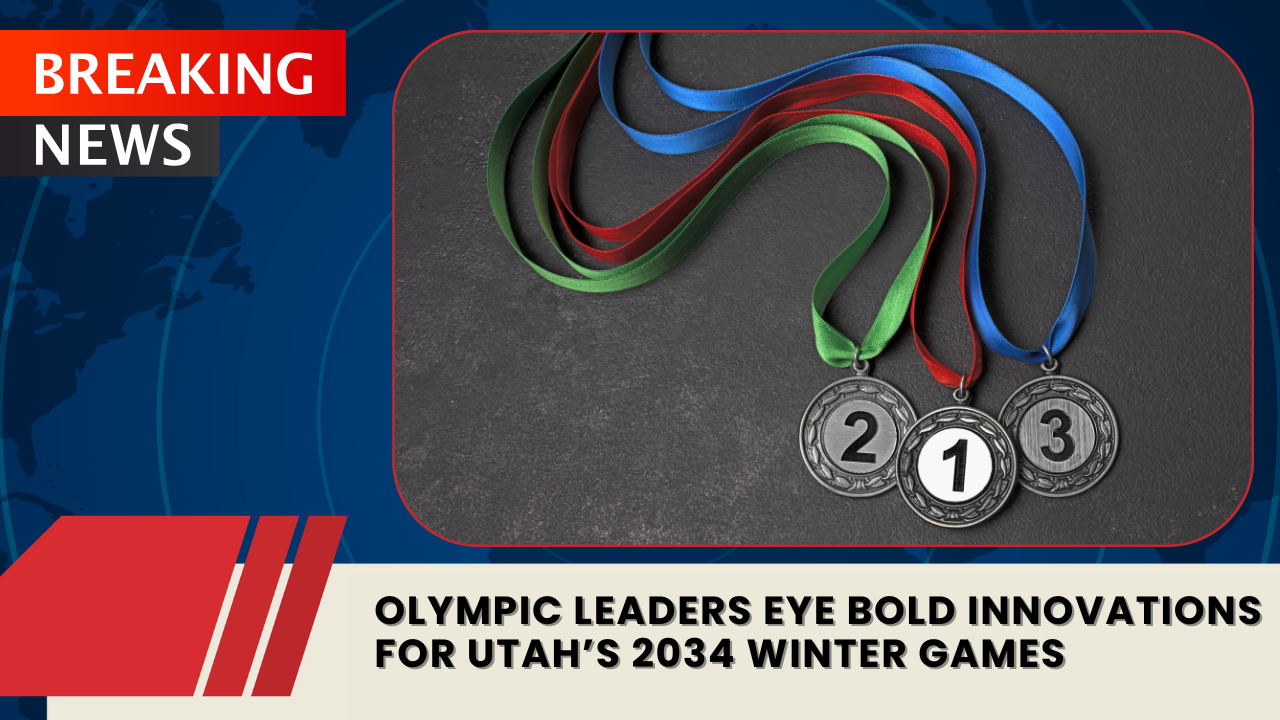NEW YORK CITY — With Utah set to host the 2034 Winter Olympics, U.S. Olympic and Paralympic officials say they’re preparing to “push boundaries” and redefine what a Winter Games can look like — from new sports to creative use of venues and advanced technology.
During the Team USA Media Summit in New York City, Sarah Hirshland, CEO of the U.S. Olympic and Paralympic Committee (USOPC), said organizers are working closely with Utah’s Olympic team to explore innovations that could make the Games both more inclusive and more exciting for athletes and fans.
“There will be a nice run here,” Hirshland said. “But the folks in Utah — and we, as their partners — are very excited about pushing boundaries and doing things that have never been done before around the Winter Games.”
New Sports Could Redefine What “Winter” Means
One of the biggest ideas under consideration involves adding new disciplines — including cross-country running and cyclocross — to future Winter Olympics.
The concept originated with the head of World Athletics, who proposed that endurance sports traditionally featured in the Summer Games could also fit into winter formats. Cyclocross, for instance, mixes road cycling, mountain biking, and steeplechase and often takes place in cold, muddy, or snowy conditions.
“It makes great sense,” Hirshland said. “It’s logical and the right thing to do. I give credit to World Athletics for pushing the envelope and thinking differently about how to present their sport.”
Both Hirshland and USOPC Chairman Gene Sykes, who also serves on the International Olympic Committee (IOC), voiced support for expanding the Winter Games beyond snow and ice-based events, as long as they align with the IOC’s evolving charter.
Sykes pointed out that the Winter Games currently feature athletes from 88 countries, compared to over 200 in the Summer Olympics.
“Africa, Southeast Asia, South America — many of those countries don’t have a heritage of winter sports,” he said. “We have an opportunity to make the Winter Games more universal. But given the snow and ice requirements, we have to be creative.”
The IOC is reviewing those requirements as part of a broader Olympic program study launched under new IOC President Kirsty Coventry.
Utah Organizers Watching Closely
Fraser Bullock, president and executive chairman of Utah’s 2034 Olympic and Paralympic Winter Games Organizing Committee, said his team is monitoring the IOC’s decisions closely.
“We look forward to the results of the IOC working group,” Bullock said. “We haven’t studied the topic in depth yet, but we’ll follow the IOC’s lead.”
Utah’s Games are being built on a $4 billion privately funded budget, with plans to reuse venues from the successful 2002 Winter Olympics. The layout already accommodates roughly 40% more events than in 2002.
Bullock said adding new sports could actually strengthen the financial picture.
“If something is added, there would be additional costs — but also additional revenue,” he said. “Ideally, it could even be a profit generator.”
He added that while most events will remain within an hour of the main Athletes Village at the University of Utah, organizers are open to holding competitions in other regions, depending on what new events the IOC approves.
State officials, including Utah Sen. Mike McKell (R-Spanish Fork), have floated the idea of hosting cross-country races in St. George, which could showcase more of Utah’s landscape beyond the Wasatch Front.
Building a “Compact, Modern Games”
Hirshland emphasized that Utah’s upcoming Olympics will be designed to maximize efficiency and sustainability.
Unlike the 2026 Winter Games in Milan-Cortina, where athletes will be spread across six distant villages, Salt Lake City’s infrastructure allows for a compact setup, minimizing travel and operational complexity.
“What Mother Nature has granted Utah is an incredible gift — a city with major infrastructure sitting right next to world-class mountains,” Hirshland said. “It’s on us to make that count.”
She added that Utah’s organizing committee is still growing, with only a small staff currently in place, but a vast local community ready to step in. Many Utahns who worked on the 2002 Games are now mentoring a new generation of organizers.
“They’re building the next generation of leaders who can help steer a home Games,” she said.
Innovation Beyond the Arena
The Media Summit also showcased how fashion and technology are evolving together for future Games.
Nike revealed Team USA’s new podium jackets — white quilted coats featuring inflatable panels that adjust for warmth using a small built-in air pump. The design, inspired by Colorado’s red rock formations, was praised as a fusion of performance and innovation.
Brad Wilson, CEO of Utah’s Olympic organizing committee, said he hopes that same spirit of innovation carries into Salt Lake City’s 2034 Games.
“It’s an interesting combination of fashion and technology,” Wilson said. “That’s exactly the kind of creativity we want to see reflected in Utah’s Olympics.”
Looking Ahead
With nearly a decade to prepare, Utah’s 2034 Winter Olympics are shaping up to be more than just a repeat of 2002. Organizers envision a Games that’s inclusive, efficient, and forward-thinking, showcasing both athletic excellence and American innovation.
The next key updates are expected once the IOC’s program review concludes — potentially paving the way for entirely new sports to debut when the world gathers again in Utah.



